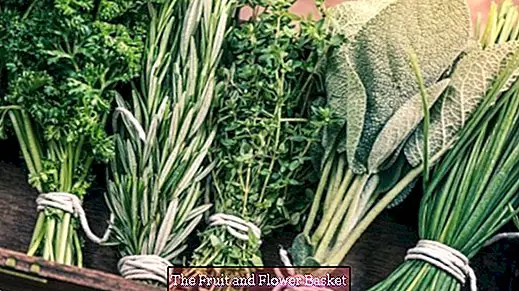The art of seasoning
Seasoning is an art that you can not learn from cookbooks. Here are not counting gram still pinches, neither knife tips nor teaspoons. The conscientious re-cooking of recipes does not help much. What counts is: tradition, experience, flair, taste and imagination.
Herbs and spices are not only an addition to give the dish a certain taste, they also promote digestion. There are many native herbs that are not widely used in home cooking. Above all, it depends on the imaginative mix.
Here are some hints:
- If possible, always use fresh herbs from your own herb garden, the balcony, the window, the weekly market, the greengrocer or the well-stocked supermarket.
- Even dried herbs are best kept in tight-fitting glasses.
- When buying dried herbs, make sure that they still have their full flavor.
- As a rule, do not add the spices to the food until the end of the preparation. Exceptional cases are described below.
- Try the dishes before you start seasoning.
- Taste them more often, by first adding only a small amount of the desired spices, which you can then extend later to taste.
- Generally use less salt (also for health reasons) in favor of spicy kitchen herbs. In many cases you can substitute saline with healthier herbal salt. This gives the dishes more flavor.
Herbs that disturb each other are:
+ Rosemary and lavender
+ Savory and lemon balm
+ Thyme & sorrel
+ Cress & chervil
+ Coriander & marjoram
+ Hyssop & thyme or sage
Sage is compatible only with garlic and onions.
Also mustard, dill & basil are not partners.
Spices, herbs & their uses:
- Spices that we can use lavishly are parsley, chives, dill, chervil, mint, borage.
- For stronger spices such as marjoram, thyme, tarragon, basil and rosemary moderate doses are appropriate.
- Of penetrating nature are allspice, nutmeg, ginger, cloves, pepper, bay leaf. For them, the required amount is pinch, knife tip or piece.
- Dried herbs generally have two to four times the spiciness of fresh garden herbs.
- Freeze-dried dill sprouts have a strong aroma and are ultimately food-like, just like parsley.
- Sage, however, releases its aroma only in hot fat, the same applies to tarragon, one of the finest herbaceous herbs.
- Have to cook: savory, lovage, marjoram, thyme, rosemary, sage. Usually not more than half an hour.
- Do not cook but should draw tarragon and sorrel.
- Fresh, mildly spicy herbs, such as parsley, chives, chervil, cress, lemon balm, basil, sage, borage and dill are usually added at the end, five minutes before serving, to preserve their valuable active ingredients as possible.
- Dried herbs are added 15 minutes before the end of the cooking time so that they can fully develop their flavorings.
- Bay leaf, peppercorns and allspice come into the pot as soon as they are put on the stove.
And now have fun cooking and do not forget: Seasoning is an art that is delicious only through fantasy. Buy now  Metaltex 364633095 Spice rack Pepito with 3 floors 10,49 ?
Metaltex 364633095 Spice rack Pepito with 3 floors 10,49 ?





